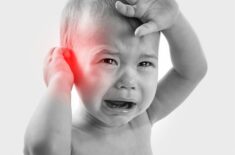Our Mission
Family Health & Wellness
“The key to good decision-making is evaluating the available information – the data – and combining it with your own estimates of pluses and minuses.”
– Emily Oster, Economist & Author of “Expecting Better”
We support mothers, parents, and caregivers by publishing well-researched and evidence-based pieces of content that help you make informed and empowered decisions regarding the care and well-being of your family.
Our Vision
We Believe That Happy, Healthy Families Begin With Mama And Baby.
Mothers, (and fathers, and caretakers), are the heart and soul of the family.
When we struggle, our family struggles.
When we thrive, our families thrive with us.
Our kids are sponges that absorb what they see and sense in their environment.
As parents, it’s our responsibility to instill the principles and habits that will help them develop well and thrive in an ever-changing and fast-paced world.
It’s our job to model healthy choices, self-love, self-care practices, and empathy.
It’s also our job to work on ourselves and nurture ourselves.
“Self-care is mindful decision-making about your needs and well-being to improve your quality of life. It involves making conscious choices and lifestyle changes to support your optimal physical, mental, emotional, and spiritual health.”
– Osmara Aryal, Founder & Editor-In-Chief of Motherhood Community
Keep reading to see our top picks for mom’s self-care and family health!
Throughout our website, you’ll find diverse and carefully curated pieces of content created for happy, healthy families.
Some of the topics we cover are:
- Baby food recalls
- Baby formula recalls
- Baby gear recalls
- Family essentials recalls
- How to have a healthy pregnancy
- The best (and safest) educational toys for any age and stage
- The safest and top-rated baby essentials like car seats, strollers, baby bottles, etc.
- Baby nutrition – breastfeeding, breast pumps, formula, and baby food
- The best and highest quality baby supplements
- Baby-led weaning
- Gut health
- Mental health
- Mindful living
- Postpartum recovery
- Family health
- Parenting
12 Tips To Minimize Exposure To Unsafe Chemicals
- Avoid plastic as much as possible, especially for food-related storage. Choose glass, silicone, or stainless steel instead.
- As much as you can, opt for organic, grass-fed, pasture-raised, and wild-caught food.
- Follow the EWG’s Dirty Dozen and Clean 15 lists.
- Check all your cosmetics and skin care products against the EWG’s Skin Deep Database.
- Opt for non-toxic household cleaning products like Dr. Bronner’s, Aunt Fannie’s, Bon Amie, Molly’s Suds, and Thrive Market’s Rosey. Also, go for fluoride-free toothpaste brands like Wellnesse.
- If you can, invest in a reverse osmosis water filtration system. Since this option can be costly, you can also invest in an individual filter container for when you’re on the go.
- Invest in a high-quality air purifier like Molecule, Air Doctor, or Coway Airmega.
- Eat an abundant amount of dark leafy greens like kale, arugula, and spinach. Herbs like cilantro and parsley also help support the body’s own detox pathways.
- Drink at least 2L of water daily to help flush toxins out. Bonus points for adding electrolytes!
- Cook with non-toxic, high-quality pans made without harmful chemicals like Teflon and PFOAS. Consider brands like Caraway, which offer beautiful designs, functionality, and safer materials.
- According to the NASA Clean Air Study, certain indoor plants can help cleanse the air of toxins. Consider plants like English Ivy, Gerbera Daisy, Peace Lily, Bamboo Palm, Green Spider Plant, Golden Pothos, and Janet Craig.
- Avoid furniture and baby essentials like car seats made with flame retardants. Opt for GreenGuard Gold certified pieces.
Health Pitfalls – 9 Chemicals & Toxins We Avoid
The following are harmful chemicals and common toxins that can interfere with health and happiness by weakening our bodies and minds. They’ve been linked to a variety of diseases, conditions, and even hormone imbalances.
These chemicals can be found in a host of everyday items such as receipts, skin care products, and household cleaning products.
Below is a detailed list of each major toxin, its potential adverse effects, where they may be lurking, and safer alternatives for your family.
We carefully vet every product, item, and service we review and/or recommend on our site in order to ensure they’re free of most if not all of the below-listed items:
1. Chemicals In Plastics, Like BPA (Bisphenol A)
Potential Harmful Health Effects
These chemicals act as ‘xenoestrogens,’ which means that they mimic the hormone estrogen causing hormone-disrupting effects.
- Interfere with reproductive development of both males and females (1) (2)
- Blood sugar balance, insulin signaling, and increased risk of diabetes (3) (4)
- Increased risk of miscarriage, preterm labor, and complications (5)
- Behavioral problems like ADHD, aggression, impulsivity, depression, and anxiety (6) (7)
Where Are These Chemicals Most Frequently Found?
- Hard plastic bottles (ie: water bottles)
- Food storage containers
- Plastic that comes into contact with hot foods or liquids
- Takeout food containers
- Water bottles left in a hot car
- Microwaving food in plastic containers
- Canned foods
- Kids’ toys
- Paper receipts
- Water pipes
- Electronics
Recommended Safer Alternatives
- Glass bottles or containers
- Stainless steel bottles or containers
- Silicone-made items
- Take photos of receipts with your phone instead of handling them
- Opt for glass jars instead of canned goods
(Please note that while there are non-BPA plastic options, plastic items may still contain potentially harmful chemicals.)
2. Heavy Metals (e.g., Mercury, Aluminum, Lead, Cadmium, & Arsenic)
Mercury
Potential Harmful Health Effects
Mercury can cause these symptoms: (8)
- Eye irritation
- Skin irritation
- Stomach upset or irritation
- Chest pain
- Difficulty breathing
- Cough
- Insomnia
- Irritability
- Headache
- Weakness
- Exhaustion
- Indecision
- Weight loss
Long-term health effects: (9)
- Neurological disorders
- Kidney problem
- Gastrointestinal issues
- Cardiovascular, genetic, and developmental disorders
- Death
Where Are These Heavy Metals Most Frequently Found?
Mercury is a naturally occurring element that can be found in many different sources: (9)(10)(11)
- Volcanoes and volcanic emissions
- Weathering rocks and soil
- Water resources (e.g., rivers, lakes, and oceans)
- Scientific measuring devices (e.g., barometers, thermometers, etc.)
- Batteries
- Forest fires
- Industrial sources
- Polluted environment
- Permafrost soils in the northern hemisphere
Where Could These Heavy Metals Also Be Hiding?
- Baby food (12)
- Fruits and vegetables such as spinach and tomato (10)
- Some fish and seafood such as tuna, king mackerel, swordfish, and orange roughy (10)
- Tap water (10)
- Dental amalgam (10)
- Fluorescent light bulbs (13)
Recommended Safer Alternatives
Ways to avoid mercury: (13)
- Choose low-mercury fish such as wild-caught sockeye salmon, sardines, and cod.
- Choose safer baby food options such as Serenity Kids food pouches.
- Use filtered water
- Use digital thermometers and other mercury-free measuring devices
- Opt for mercury-free paint
Lead
Potential Harmful Health Effects
Lead might cause: (14)
- Brain and nervous system damage
- Learning and/or behavior problems
- Hearing and/or speech problems
- Delayed growth and development
Long-term cognitive effects: (14)
- Lower IQ
- Underperformance in school
- Inactiveness or decreased ability to pay attention
Where Are These Metals Most Frequently Found?
- Drinking water (due to lead-containing water pipes)
- Lead-contaminated soil (especially near industrial areas)
- Lead-based paint
- Lead-based paint pesticides
- Other polluted environments
Where Could These Metals Also Be Hiding?
- Baby food (12)
- Chocolate (32)
- Children’s toys (through paint or other coloring materials) (15)
- Floors or walls painted with lead-containing paint (15)
- Some imported jewelry and candies (15)
- Traditional or home remedies and herbs (15)
- Automotive batteries (15)
- Second or third-hand smoke
Recommended Safer Alternatives
- Lead-free toys (15)
- Filtered water or other safe water sources
- Lead-free paint and materials
Arsenic
Potential Harmful Health Effects
Arsenic can cause: (16)(17)(18)
- Problems affecting the immune or lymphatic system
- Cancer (e.g., skin, bladder, kidney, prostate, or lung cancer)
- Diabetes
- Cardiovascular disease
- Skin lesions
- Cognitive development delays
- Harm to the skin, liver, eyes, kidneys, and lungs
- Miscarriage, stillbirth, and other adverse pregnancy outcomes
- Increased risks of young adult mortality (death)
Acute or immediate symptoms of arsenic poisoning: (17)
- Abdominal pain
- Diarrhea
- Vomiting
- Muscle cramping
- Numbness and tingling of the extremities
- Death (extreme cases)
Where Are These Heavy Metals Most Frequently Found?
- Groundwater
- Soil
- Industrial products (e.g., paints, wood preservatives, and glass)
- Agricultural chemicals
- Tobacco (including second-hand smoke)
Where Could These Heavy Metals Also Be Hiding?
- Baby food (12)
- Fish and shellfish (19)
- Root vegetables like sweet potatoes (10)
- Rice and rice products (18)
- Other food sources (e.g., poultry, mushrooms, or some fruit juices) (18)
- Some pressure-treated wood (18)
Recommended Safer Alternatives
- Filtered water or other safe water sources
- Reduce consumption of rice, especially for babies and young children
- Choose safer baby food options such as Serenity Kids food pouches.
Cadmium
Potential Harmful Health Effects
Cadmium can cause: (20)(21)
- Lung cancer
- Kidney disease
- Fragile bones
- Lung damage
- Death
Symptoms of acute cadmium poisoning: (20)
- Severe stomach irritation
- Diarrhea
Where Are These Metals Most Frequently Found?
- Soil and rocks
- Forest fires
- Second-hand tobacco smoke
- Nickel-cadmium batteries
Where Could These Metals Also Be Hiding?
- Baby food (12)
- Chocolate (32)
- Metal coatings and pigments (21)
- Plastic products
Recommended Safer Alternatives
- Filtered water or other safe water sources
- Reduce plastic usage, especially food-related
Aluminum
Potential Harmful Health Effects
- Aluminum is usually not harmful (except high-level acute exposure) (22)
Where Are These Metals Most Frequently Found?
- Aluminum products – aluminum food foil, many deodorants, etc.
Where Could These Metals Also Be Hiding?
- Antacids
- Processed foods (23)
Recommended Safer Alternatives
- Silicone products
- Aluminum-free deodorant if you don’t want to apply metals to your skin daily
- Avoid food coming into contact with aluminum foil at high temperatures
- Minimize the use of over-the-counter antacids
3. Parabens
Potential Harmful Health Effects
Parabens can cause: (24)
- Hormone disruption
- Fertility issues and reduced reproductive health
- Birth outcomes
- Cancer
Some acute symptoms: (24)
- Skin irritation
Where Are These Chemicals Most Frequently Found?
- Leave-on and rinse-off products (e.g., shampoo and conditioner)
- Lotion
- Moisturizers
- Face and skin cleaners
- Deodorant
- Sunscreen
- Shaving gel
- Toothpaste
- Makeup
- Many other products
Where Could These Chemicals Also Be Hiding?
- Baby essentials (e.g., wipes, lotion, teething rings, etc.)
Recommended Safer Alternatives
- If a product will touch your or your family’s skin – always read the label!
- If you can opt for organic choices and brands known to use natural ingredients
4. PVC (Polyvinyl chloride)
Potential Harmful Health Effects
PVCs can cause: (25)
- Disruption in natural hormone function
- Early-onset of puberty (girls); risk factor for later-life breast cancer
- Congenital disabilities (boys)
- Liver problems
- Testicular cancer
- Other forms of cancers (e.g., lymphoma liver cancer, liver leukemia, brain, and lung cancer)
Where Are These Chemicals Most Frequently Found?
- Plastic products
Where Could These Chemicals Also Be Hiding?
- Baby toys
Recommended Safer Alternatives
- Silicone or glass
5. Phthalates
Potential Harmful Health Effects
Phthalates can cause: (26)
- Damage to the kidneys, liver, lungs, and reproductive system
- Delayed reproductive tract development in males
- Reduced IQ
- Attention problems and hyperactivity
- Poorer social communication
Where Are These Chemicals Most Frequently Found?
- Skincare products, shampoos, hair spray, and soaps – especially the perfumed variety
- Plastic products
Where Could These Chemicals Also Be Hiding?
- Baby toys
- Medical devices
Recommended Safer Alternatives
- Read the labels and packaging of all products that touch or go on the skin
- Look for products labeled phthalate-free
- Avoid scented or fragranced products
- Non-plastic products such as glass and silicone
6. Pesticides
Potential Harmful Health Effects
Pesticides can cause these short-term effects: (27)
- Acute health effects
- Dizziness
- Diarrhea
- Nausea
- Stinging eyes
- Rashes
- Blisters
- Blindness
- Breathing difficulties
- Death
Long-term pesticide effects: (27)
- Cancers
- Congenital disabilities
- Reproductive issues (e.g., infertility, sterility, etc.)
- Adverse effects on the immune system
- Endocrine system disruption
- Brain and nervous system damage
Where Are These Chemicals Most Frequently Found?
- Chemical products to kill pests
Where Could These Chemicals Also Be Hiding?
- Non-organic baby food
- Fruits and vegetables sprayed with pesticides – conventionally grown produce
Recommended Safer Alternatives
- Certified organic food products, especially produce.
7. Flame Retardants
Potential Harmful Health Effects
Possible effects of flame retardants: (28)
- Endocrine disruption
- Thyroid dysfunction
- Issues in brain and bone healthy
- Reproductive system issues
Where Are These Chemicals Most Frequently Found?
- Electronics and electrical devices
- Furnishings
- Building and construction materials
Where Could These Chemicals Also Be Hiding?
- Baby products (e.g., clothes, strollers, blankets, etc.)
Recommended Safer Alternatives
- Products without flame retardants
8. PFCs (Non-Stick Coating)
Potential Harmful Health Effects
Possible effects of PFCs (perfluorinated compounds): (29)(30)
- Kidney cancer
- Testicular cancer
- Prostate cancer
- Bladder cancer
- Breast cancer
- Ovarian cancer
Where Are These Chemicals Most Frequently Found?
- Products with non-stick coating (e.g., Teflon, Stainmaster, etc.)
Where Could These Chemicals Also Be Hiding?
- Clothes
- Furniture
- Household cleaners
Recommended Safer Alternatives
- PFC-free products (e.g., cast iron, stainless, or ceramic-coated pans)
9. Fluoride
Potential Harmful Health Effects
Excessive fluoride exposure can cause: (31)
- Dental fluorosis (changes in the tooth enamel)
- Skeletal fluorosis (causes deformed bones)
- Arthritis
- Joint-related problems
- Bone damage
- Osteoporosis (decreased bone mass)
- Muscular damage
- Fatigue
Where Are These Chemicals Most Frequently Found?
- Most toothpaste
- Fluoridated water
Where Could These Chemicals Also Be Hiding?
- Baby formula
Recommended Safer Alternatives
References:
(1) https://www.semanticscholar.org/paper/Environmental-xenoestrogens%2C-antiandrogens-and-of-Sultan-Balaguer/8a6a63557943004e8e069aa1d19aa7cd062361e9
(2) https://www.semanticscholar.org/paper/Perinatal-exposure-to-xenoestrogens-impairs-mammary-Kass-Altamirano/bbf26e8407fa179388db80aaf10a9b0a84398a0f
(3) https://hal.archives-ouvertes.fr/hal-00499122
(4) https://pubmed.ncbi.nlm.nih.gov/20488778/#:~:text=Results%3A%20BPA%20exposure%20aggravated%20the,leptin%20concentrations%20relative%20to%20controls.
(5) https://pubmed.ncbi.nlm.nih.gov/23994667/
(6) https://pubmed.ncbi.nlm.nih.gov/23870093/
(7) https://pubmed.ncbi.nlm.nih.gov/27281688/
(8) https://www.cdc.gov/niosh/topics/mercury/default.html
(9) https://www.des.nh.gov/sites/g/files/ehbemt341/files/documents/2020-01/ard-28.pdf
(10) https://www.ncbi.nlm.nih.gov/pmc/articles/PMC4427717/
(11) https://phys.org/news/2018-02-scientists-massive-reserves-mercury-hidden.html
(12) https://oversightdemocrats.house.gov/sites/democrats.oversight.house.gov/files/2021-02-04%20ECP%20Baby%20Food%20Staff%20Report.pdf
(13) https://www.atsdr.cdc.gov/dontmesswithmercury/pdfs/mercury_safe_alternatives.pdf
(14) https://www.cdc.gov/nceh/lead/prevention/health-effects.htm
(15) https://www.atsdr.cdc.gov/csem/leadtoxicity/lead_found.html
(16) https://www.cdc.gov/niosh/topics/arsenic/default.html
(17) https://www.who.int/news-room/fact-sheets/detail/arsenic
(18) https://www.cancer.org/healthy/cancer-causes/chemicals/arsenic.html
(19) https://www.cdc.gov/biomonitoring/pdf/arsenic_factsheet.pdf
(20) https://www.cancer.gov/about-cancer/causes-prevention/risk/substances/cadmium
(21) https://www.cdc.gov/biomonitoring/Cadmium_FactSheet.html
(22) https://wwwn.cdc.gov/TSP/ToxFAQs/ToxFAQsDetails.aspx?faqid=190&toxid=34
(23) https://www.ncbi.nlm.nih.gov/pmc/articles/PMC5651828/
(24) https://www.ewg.org/what-are-parabens
(25) https://www.state.nj.us/humanservices/opmrdd/health/pvc.html
(26) https://noharm-uscanada.org/issues/us-canada/phthalates-and-dehp
(27) https://www.pesticidereform.org/pesticides-human-health/
(28) https://www.niehs.nih.gov/health/topics/agents/flame_retardants/index.cfm
(29) https://www.ewg.org/research/pfcs-global-contaminants
(30) https://www.cancer.org/healthy/cancer-causes/chemicals/teflon-and-perfluorooctanoic-acid-pfoa.html
(31) https://pubmed.ncbi.nlm.nih.gov/34597567/#
(32) https://www.consumerreports.org/health/food-safety/lead-and-cadmium-in-dark-chocolate-a8480295550/












